Impactful weight training for golf begins with, above all else, exercise selection.
There are 5 categories of exercises every program should include: squat, hip-hinge, lunge, presses, and pulls.
So, let’s take a closer look at each of these and where a beginner should start.
#1 Squat
The coiling and uncoiling needed to create clubhead speed requires leg strength. The legs also need the muscular endurance required to walk eighteen holes. There’s no better exercise to develop the legs than squat variations.
Your anatomy may play a roll in the type of squat variation you choose. Someone with a shorter torso and longer legs will probably feel more comfortable with a shoulder width or wider stance, and a slight heel elevation. To elevate your heels you can use heel wedges that are made for this specific purpose. Or placing your heels on 2.5-10 pound weight plates works as well.
Someone with a longer torso and shorter legs has more of a natural squatting anatomy and often feels best squatting with a hip to shoulder width stance. Heel elevation may or may not be needed.
You should work to get the crease of your hip lower than the top of your knee while keeping a flat back with minimal forward lean. Until you can do that, work to increase your range of motion with just your body weight rather than increasing external resistance. If your range and technique are solid, you may load the squat.
A great first option is the goblet squat. For this variation you hold a dumbbell with both hands in front of the chest. With the weight in front of your body, it’s easier to keep an upright posture and generally puts less stress on the spine.
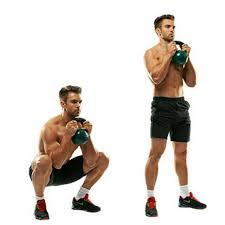
Squat machines are another option. In the past, many people in the strength world have scoffed at machines, but there are a number of well-designed hack squat and pendulum squat machines on the market.
I have had success using them with older clients who are weight training for golf, as well as with athletes with injury history that prevents free weight squatting. Machines are not my first choice, but in many cases they are a valid option for increasing leg strength.
#2 Hip-Hinge
The hip-hinge can be a difficult movement to execute for a beginner, but it’s imperative that you work to master it because there is nothing better for strengthening the hamstrings, glutes, and low back. We all know how important strength through the hip region is for increased distance off the tee.
There are a number of great hip-hinge exercises, but I start beginners with the DB (dumbbell) Romanian deadlift.
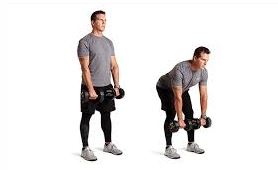
Start with your feet at hip width and your toes turned just slightly outward. Stand tall with your chest out and hold the dumbbells at your sides. You’re going to initiate movement by pushing your hips backwards. ***This is the most important part of the exercise***. It’s NOT a forward bend toe touch with weights. The hips must move backwards first before anything else happens.
As your hips move back, maintain a small degree of knee bend – just be careful not to turn this into a squat. Keep pushing your hips back while maintaining a flat back and keep the dumbbells at your sides. As your torso gets closer to parallel to the floor, you should expect to feel a stretch in your hamstrings, and the dumbbells may come forward slightly to counter-balance your body weight moving backwards. Once you reach the bottom, reverse the motion by driving your hips forward, keeping your back flat throughout the entire rep.
Range of motion on this exercise is individual. You should be aiming to reach mid-shin or lower. But many won’t have the ability to get quite that low due to back rounding or hamstrings tightness. In that case, a good option is the Romanian deadlift with a single kettlebell lifted from a platform or box. Start with a box that allows you to maintain the proper technique and gradually over time reduce the height of the box to increase your range of motion.
THE STRONGER YOU ARE, THE BETTER YOU PLAY
Discover #1 Golf Fitness Training App…
#3 Lunge
The lunge is the last fundamental movement for the legs; specifically the split squat. The split squat is a static lunge variation – meaning you set your feet in position and they don’t move until the reps are complete.
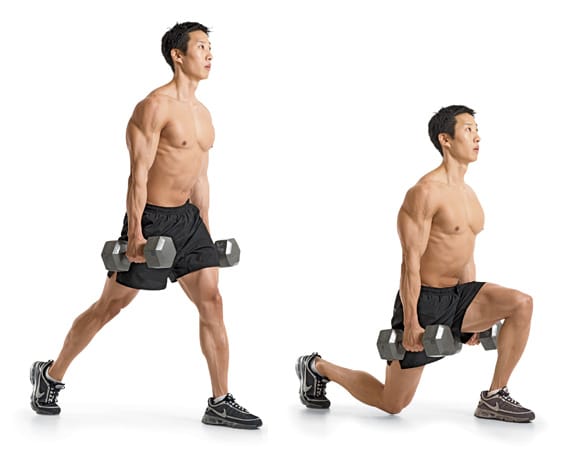
Split squats and other unilateral exercises are great for developing strength, active range of motion, and muscular balance. We want to minimize strength discrepancies from one leg to the other, and split squats help us do that.
Begin by taking a long stride forward, keeping your torso erect. Only your toes on the rear foot should be touching the floor. Your heel should be up. Now push your front knee forward and bring your back knee towards the floor, while maintaining your torso position. You should feel a stretch in your rear leg’s hip flexor as you lower yourself. Lower yourself until your back knee is about one inch from the floor then drive yourself back up to the starting position. After you complete all reps switch legs and repeat.
You can make the split squat easier by elevating the front foot. The higher the elevation the easier the exercise. If you have to elevate above about twelve inches, you’re probably better off using some type of remedial step-up variation.
To make split squats more demanding, you have a few options:
- Add resistance by holding DBs at your sides
- Place a barbell across your back
- Hold onto a low pulley handle in the hand opposite your front leg
Also, elevating the rear foot on a box or platform is another way to increase the difficulty of split squats. We’ve found an elevation of 4-6” works best.
One last thing: always begin unilateral exercises with your weaker side. Let the weaker side dictate the weight and reps you perform, and repeat for the opposite leg even when it is easier.
#4 Press
There are a ton of great options in this category:
- Decline
- Flat
- Incline
- Overhead
- Dumbbells
- Barbells
- And More.
For the beginner who is weight training for golf, it’s tough to beat the regular push-up. This has been a standard for physical readiness as far back we can look. And if you’re new to weight training for golf, there’s no better place to start.
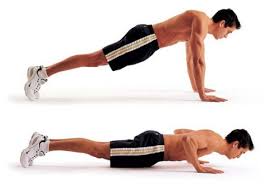
This one doesn’t need much description: with a shoulder width hand placement and a rigid torso, you lower your chest to the floor and press back up. We’ve all done them and it’s relatively easy to identify sloppy vs. strict technique even for the casual exerciser.
We do have several options for modifying the push-up though. I like to do a lot of my clients’ pressing variations with a palms-in-hand position for shoulder health. To get this hand position for the push-up, you can use handles specifically made for this or you can place hex dumbbells on the floor.
For someone who doesn’t have the strength to do strict push-ups yet, you may elevate your hands. The higher the hands, the easier the exercise. My favorite way to do this is with a barbell in a power rack. Set the pins in the power rack to the height you want. Then place a barbell across the pins, and wedged securely against the posts of the rack so it doesn’t roll. Then you can grip the bar and set your feet. As you become stronger, lower the pins in the rack as you get closer and closer to performing push-ups from the floor.
To make the standard push-up even more difficult, you can elevate the feet, wrap a band around your back, or wear a weight vest.
#5 Pull
Lastly on our list of the absolutely necessary movements, is the pull. We typically start our clients with the single-arm dumbbell row. This is a great exercise for muscular balance, posture, and developing the lats, which are key in developing swing speed.
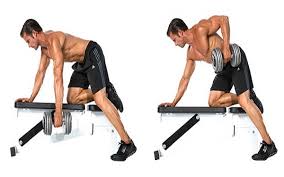
You’ll need one dumbbell. You’re going to support yourself with your opposite hand and opposite knee on bench. Position yourself so that your torso is parallel to the ground with a slightly arched back. You’re going to maintain that position for the duration of the set. In the bottom position your working arm should be straight and the DB should be slightly in front of your shoulder. From there, squeeze your shoulder blade back as you pull the dumbbell towards your hip. It’s a similar motion to starting a lawn mower, only with extra attention to keep a rigid torso and shoulder blade pull back.
Again, control of the torso and shoulder blade are key in making this exercise as effective as possible. Choose a weight that allows you complete perfect reps. As you get stronger and the weights get heavier, you’ll notice how valuable this exercise is for midsection strength as well.
Now, I know what you’re thinking, “Why there are no rotation exercises listed?”
Rotation is obviously a huge part of swinging a club, and rotation exercises are always favorites of golfers. But for the beginner, total body strength and stability should take priority in the weight room. It’s easy to overdo rotation training, especially when you consider the total volume of rotation done in rounds played, and range sessions.
I’m not saying rotation exercises should never be done, just that it’s more important to initially build a base of strength and muscular control.
BONUS: For golfers who know their way around the gym, a great anti-rotation exercise to promote stability through the trunk is the Pallof Press.
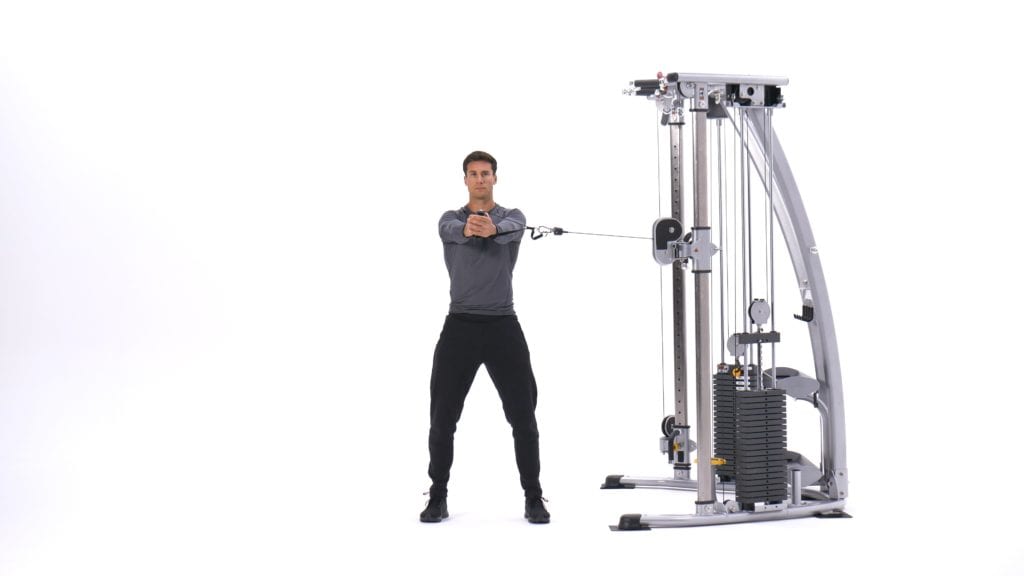
To perform this exercise on a standard cable system, set the pulley to just above hip height. Grip the handle with clasped hands. Standing with a hip-width stance and a slight bend in the knees, start with the handle close to and just below the chest with bent arms.
You’re going to SLOWLY press the handle out to an arms-fully-extended position (it’s harder than it looks). The pulley system will try to rotate your torso back towards it, so you’ll have to fight to maintain stiffness.
Again, slowly reverse the handle back in front of your chest. The key is to keep your torso still for duration of the set. Start with light resistance on this exercise. The first few reps of your first set will feel easy, but will quickly get much harder.
When you begin weight training for golf, there are endless exercises and routines you can do. But if you’re a beginner weight training for golf, spend your time mastering these five: squat, Romanian deadlift, split squat, push-up, and single arm DB row.
Down the road you can use a number of other exercises, but initially spending the bulk of your training time on these will set you up for long-term success.
THE STRONGER YOU ARE, THE BETTER YOU PLAY
Discover #1 Golf Fitness Training App…

